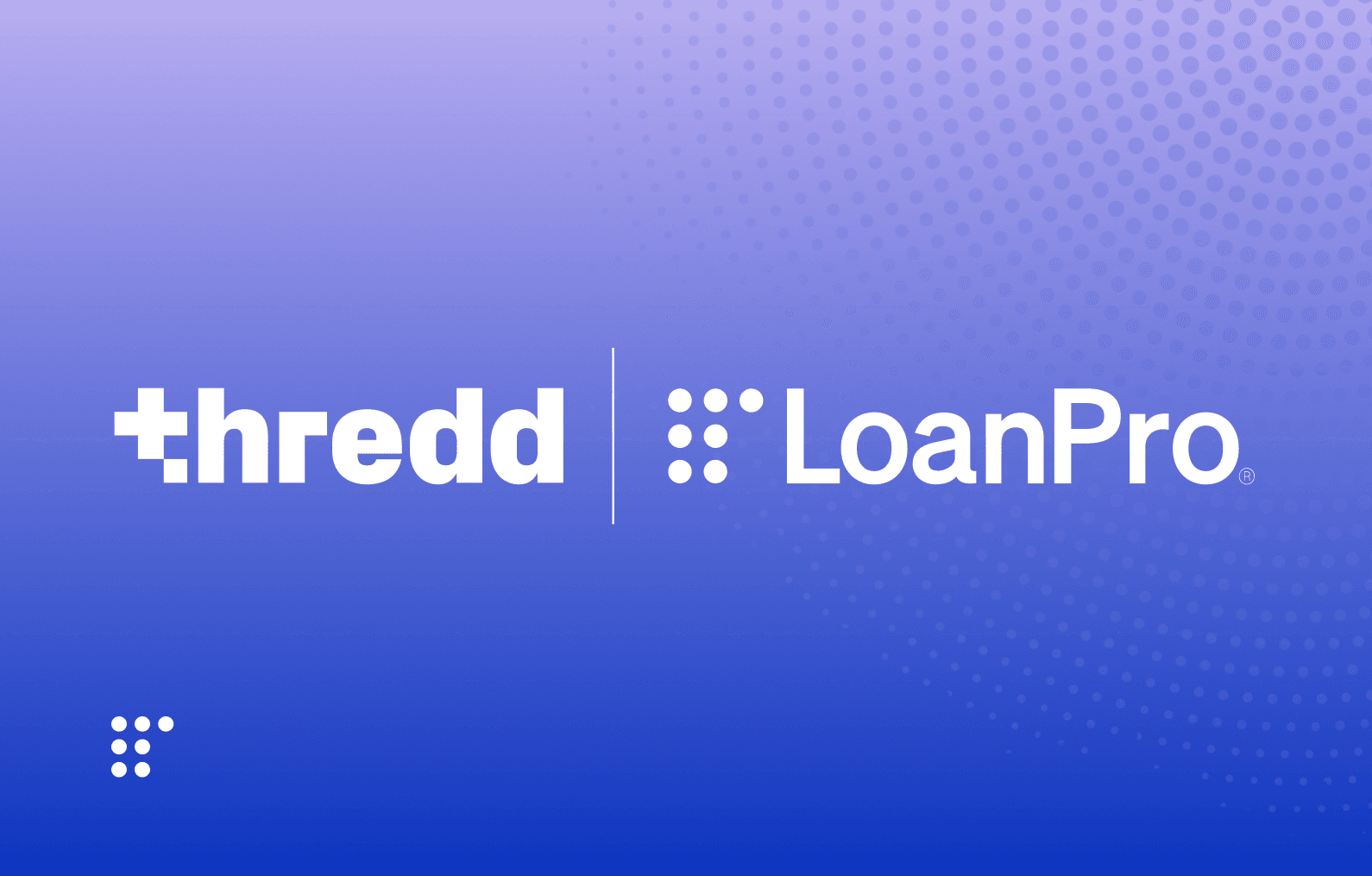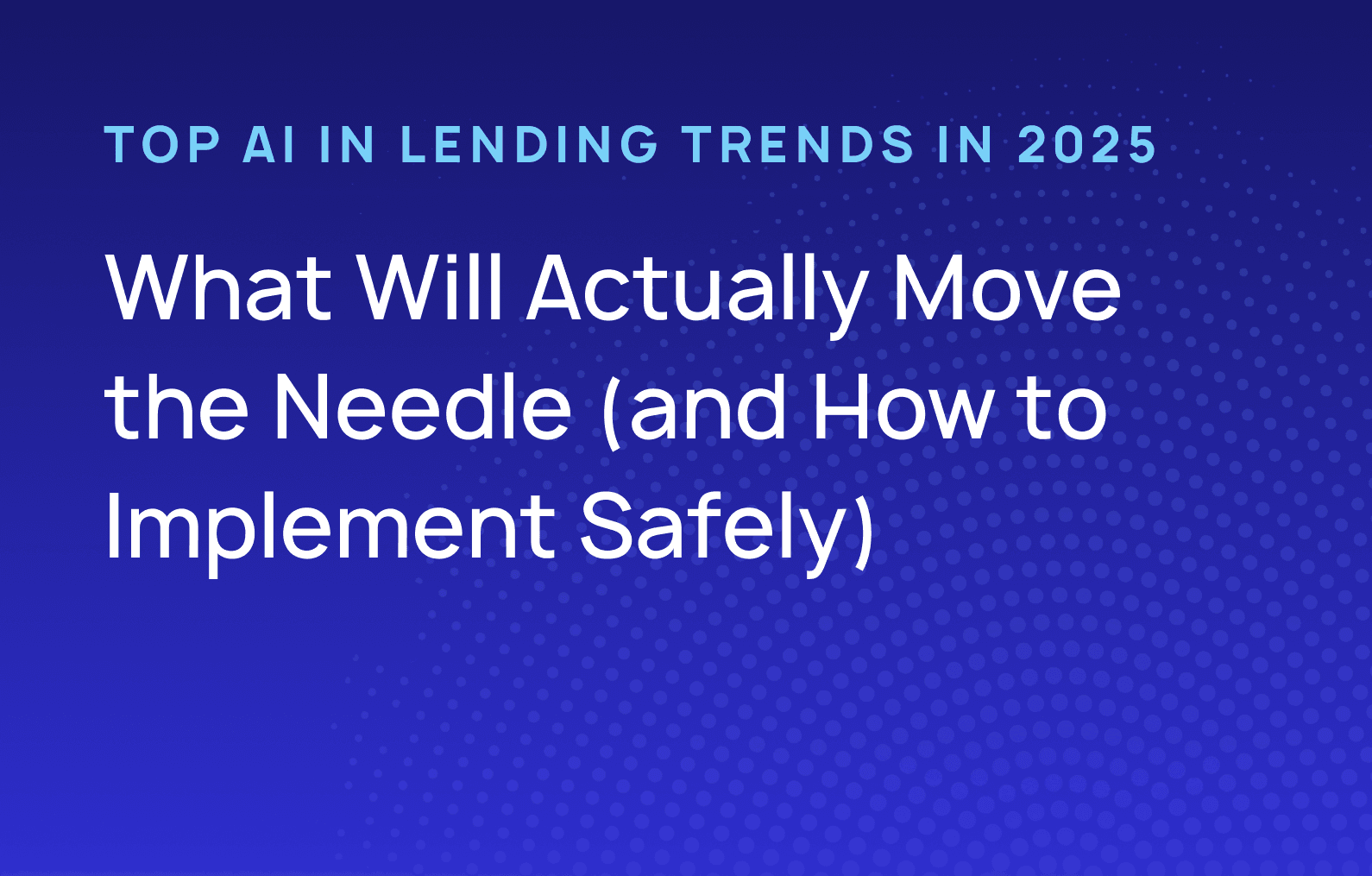A COO's guide to evaluating loan origination software
If your loan origination process is too long, too slow, too cumbersome, or too rigid, customers will walk away. In fact, a loan application abandonment rate of up to 50% is pretty common, with some institutions losing up to 75% of potential loan customers.
Today’s consumers and small business owners want fast, easy, and efficient loan applications. This is why choosing the right loan origination platform is critical. Here is your definitive strategic guide to selecting the best loan origination software for your organization, moving beyond a simple feature checklist to a framework for making a sound, future-proof investment in loan origination technology.
In this guide, we’ll cover:
How should a COO strategically evaluate a loan origination system?
- Assessing current and future loan origination needs
- Aligning your new loan origination software with business goals
- Addressing the COO's dilemma: When is it time to modernize your LOS?
What are the key criteria for a modern loan origination platform?
- Scalability and performance: Future-proofing your growth
- API-first architecture: The key to innovation and integration
- Configuration vs. customization: Why it matters for your loan origination system
- Compliance and security in your lending platform
Commercial vs. consumer loan origination software: What are the key differences?
Build vs. buy: What's the right choice for your loan origination software?
- Calculating the total cost of ownership (TCO)
- The hidden costs of legacy loan origination systems
How do you assess loan origination software vendors?
- Evaluating a vendor's product roadmap and vision
- The importance of implementation and ongoing support
Making the case for a modern loan origination platform
How should a COO strategically evaluate a loan origination system?
Evaluating loan origination systems goes beyond reviewing technology features, pricing models, and support platforms. For Chief Operating Officers, it’s about understanding the unique needs of your business and your customers — both now and into the future, and ensuring the platform aligns with your specific operational, compliance, and security requirements. Finally, it’s about understanding when the time is right to modernize any existing loan origination system (LOS).
Assessing current and future loan origination needs
To get started, operational teams should identify and analyze current specific needs and pain points. First, determine how the system must support the types of deals your organization handles, from commercial lending to consumer lending.
Next, consider inefficiencies in your current LOS. For instance, some of the most common issues with legacy loan origination systems include:
- Mismatched calculations: Are TILA disclosures calculated inconsistent with calculations in the servicing system?
- Rigid data gathering: Does the system rely on long, manual application processes that could be hurting application-to-funded loan ratios?
- Disjointed processes: Do you currently rely on multiple systems which introduces added complexity and compliance risk?
Then, it’s important to look ahead to consider how the system can support long-term strategic goals, like expanding into new markets or improving risk assessment.
Aligning your new loan origination software with business goals
Once you have a clear picture of your current needs and pain points — and where you want to go in the future, make sure you have established your core business goals and prioritized these objectives. This ensures you are evaluating the right criteria for your LOS. Common objectives with any loan origination solution could be to reduce approval times, enhance the borrower experience, improve compliance, or increase competitiveness.
Addressing the COO's dilemma: When is it time to modernize your LOS?
Those same pain points identified and goals you established for your LOS system will tell you when it’s time to modernize your loan origination system:
- Stagnate growth: Can your current system handle increased loan volumes or new loan products?
- Poor borrower experience: Does the current LOS offer a frictionless, personalized application process for potential borrowers?
- Operational inefficiencies: Are there manual processes that create bottlenecks, slow down approvals, or increase costs?
- Security and compliance risks: Does the system rely on outdated technologies that could put you at greater risk of data breaches or compliance gaps?
- Lack of actionable data and insights: Does the system provide the analytics you need to monitor risk, identify opportunities, and fuel growth?
- High maintenance costs: Are you spending too much time, money, and resources on maintaining outdated technologies or applying manual updates.
What are the key criteria for a modern loan origination platform?
Scalability and performance: Future-proofing your growth
Smart lenders evaluate loan origination platforms based on their plans for the future, not where they are today. Can the LOS handle 10 times your current loan volume? Will it support new product types you are currently considering, or may consider down the road? Does it offer the reporting and analytics capabilities to support your organization as it matures?
Future-proofing your growth plans requires looking ahead and not simply choosing a platform that supports your current loan origination workflow.
API-first architecture: The key to innovation and integration
Configurable, API-first platforms enable you to adapt to changing requirements and integrate seamlessly with other business applications.
Instead of rigid systems that force you to change processes to match their limitations, look for systems that can be configured to fit your needs and enable real-time data sharing between systems. For example, LoanPro’s Origination Suite enables you to seamlessly integrate any acquisition, underwriting, or decisioning tool into our API-first architecture.
Download our one-pager to learn more about LoanPro’s approach to loan origination.
Configuration vs. customization: Why it matters for your loan origination system
Speed, cost, maintenance, agility. These are the key factors when it comes to choosing between configuration or customization for your LOS.
While customization sounds appealing on the surface, this requires writing new code or modifying core code to enable unique functionality. This takes time, costs more, and will require ongoing maintenance support.
On the other hand, configuration uses the system's built-in tools to make adjustments so that you can rapidly design, launch, and service new programs. This approach also ensures a more future-proof LOS as it won’t require new code any time you need to make a change. Configuration gives you the peace of mind to increase operational efficiency while still enabling you to quickly innovate when launching new products.
Compliance and security in your lending platform
Lending is one of the most highly regulated industries, and compliance requirements will only continue to grow more complex over time. Security and compliance should be built into the platform’s core system architecture, not added on.
Look for a platform that meets industry security standards and undergoes regular third-party audits. And, the best loan origination systems should provide safeguards against security breaches and regulatory violations, not just reports that tell you when things have gone wrong.
Commercial vs. consumer loan origination software: What are the key differences?
When evaluating any LOS for your business, it’s important to make sure it can handle the needs of the types of loans you offer. There are a few key differences between consumer and commercial loan origination softwares.
Consumer loan origination software: Consumer loan origination systems are typically built for high-volume, standardized loans, such as auto loans, personal loans, or mortgages. The system should work to help you streamline the online application process for consumers and leverage automated tools and artificial intelligence to process loans more quickly.
Commercial loan origination software: Commercial loan origination systems need to be able to handle more complex, customized business loans, from real estate to equipment purchases to working capital. Instead of standardized data like credit scores and income for consumers, commercial LOS needs to be able to analyze detailed financial statements, cash flow, and diverse business models. Instead of speed and simplicity, a commercial LOS should be built for complex workflows and analysis and helping to manage diverse business client relationships.
Build vs. buy: What's the right choice for your loan origination software?
The other big decision any COO needs to make when evaluating loan origination software is whether to build a credit platform or buy from a vendor. Either choice comes with its own set of tradeoffs. Building your own system may guarantee total ownership but it requires significant investment of resources and personnel. Buying a modern, configuration-first platform means a significantly smaller investment of time and money — and, while you won’t own the system, you maintain control over your data and processes.
Get smart on the trade-offs of building vs. buying your credit platform by downloading our build vs. buy navigational guide.
If you choose to buy from a vendor for your origination platform, make sure your loan management software selection avoids common pitfalls like underestimating the total cost of ownership (TCO) and hidden costs within your legacy LOS.
Calculating the total cost of ownership (TCO)
Don’t be blinded by the initial price tag. Just like purchasing a home or a used car, a bargain sticker price on your LOS will likely have hidden costs that could end up being far more than you expect.
With your budget in mind, don’t limit your cost analysis to upfront licensing costs. Just like that cheap used car, you’re likely only seeing a fraction of the actual cost.
Implementation costs, including system integration, data migration, staff training, and system testing, can easily exceed licensing fees. In addition, you need to consider any ongoing expenses like maintenance fees, support costs, upgrade charges, and internal resources needed to keep everything running.
Finally, don’t forget about manual processes that you have to maintain just to save a few bucks. These manual inefficiencies introduce risk — human errors in loan calculations, payment processing, or compliance reporting — and cost you more down the road in missed opportunities.
The hidden costs of legacy loan origination systems
Sticking with your legacy loan origination system is not the answer. While many think this just means more maintenance and support, legacy systems come with a whole host of hidden costs, including:
- Operational inefficiencies: Legacy systems typically require more manual processes to plug the gaps, including manual data entry and disconnected workflows. This costs time and money, and may lead to a higher rate of errors.
- High maintenance and integration costs: The older the system, the more complex and expensive it is to maintain. Some banks may pay exorbitant rates to keep systems up and running. And, integrating any newer tools into the system will likely require costly custom integration work.
- Increasing security vulnerabilities: Older systems were not designed to handle new cyber threats and typically lack modern security features, making you more vulnerable to data breaches.
- Heightened compliance risks: As the regulatory environment continues to evolve, legacy systems will often lack the built-in features and automation needed to ensure compliance without significant manual work.
- Declining customer experiences: Customers demand fast, frictionless loan processes. Legacy systems are likely missing the mark as customer demands continue to increase.
- Limited innovation: While your IT budget is focused on maintaining an aging legacy system, that’s money you can’t spend on new innovation to adapt to market changes.
How do you assess loan origination software vendors?
Finding the right vendor in a sea of options can be difficult. You know the features you need, the budget you have to spend, and your goals. Now, it’s time to find the right partner to bring those goals to life. This means looking beyond the vendor’s current features, functionality, and costs.
Evaluating a vendor's product roadmap and vision
The best vendor solutions will support both your current needs and long-term strategy. Look for a vendor with a vision that aligns to your priorities and a product roadmap that outlines new features and innovations that will make your goals a reality.
The importance of implementation and ongoing support
Purchasing a vendor solution is not a one and done prospect. Choosing the right loan origination solution is not just a software choice. It’s a people choice. Implementing and maintaining a new solution can be complex and time-consuming. You need a reliable partner that offers proactive guidance through the implementation process — and offers ongoing support that is timely, responsive, and personalized to your needs.
Making the case for a modern loan origination platform
Throughout this guide, we’ve shared best practices, guidance, and insights to help any Chief Operating Officer make the best loan origination system decision for their business. A modern loan origination platform is the best way to future-proof your investment and your business.
LoanPro offers a next-generation architecture and configuration-first platform that can help you unlock new possibilities. Our modern API enables you to smoothly integrate with preferred partners and custom applications, automate processes, and increase efficiency.
If you are currently evaluating LOS platforms to meet your needs, download our one-pager to see how LoanPro’s approach to loan origination stacks up.



